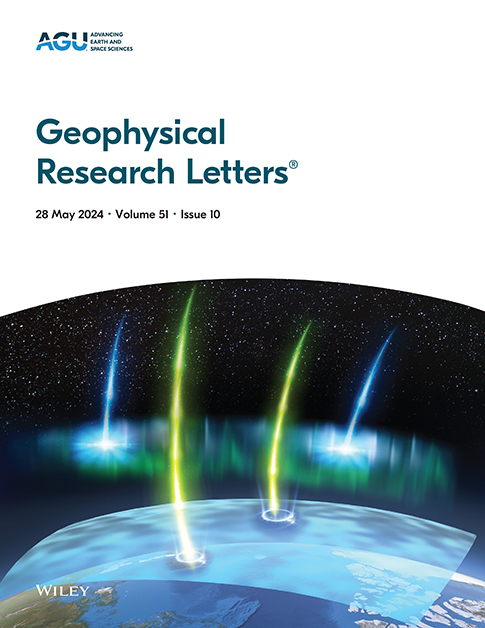全球水模式对历史陆地储水干旱的低估
IF 4.6
1区 地球科学
Q1 GEOSCIENCES, MULTIDISCIPLINARY
引用次数: 0
摘要
加强干旱模拟对于水资源的现实预测和有效管理至关重要,特别是在预计气候变化将加剧干旱频率和严重程度的情况下。全球水模式(GWMs)模拟了具有连续时空覆盖的历史和未来陆地储水量(TWS)。然而,目前还缺乏针对干旱的GWMs对TWS模拟的全球评估。本文通过与重力恢复和气候实验卫星数据的比较,首次评估了GWMs模拟TWS干旱的能力。我们发现,在包括北美、南美、非洲和北亚在内的不同地区,gwm显著低估了干旱严重程度和覆盖范围。在不剔除趋势的情况下,与2002-2015年相比,近年来(2016-2019年)对TWS干旱的低估更为明显,尤其是在北纬地区。这种代表性不足突出了改进GWMs以模拟TWS干旱的必要性。我们的结果表明,以前报告的未来TWS预测可能低估了干旱。本文章由计算机程序翻译,如有差异,请以英文原文为准。
Underestimation of Historical Terrestrial Water Storage Droughts in Global Water Models
Enhanced drought modeling is crucial for realistic prediction and effective management of water resources, especially with climate change anticipated to exacerbate drought frequency and severity. Global water models (GWMs) simulate historical and future terrestrial water storage (TWS) with continuous spatial and temporal coverage. However, a global evaluation of TWS simulations by GWMs focused on drought is lacking. Here we evaluate, for the first time, GWMs' capability to represent TWS droughts by comparing simulations with Gravity Recovery and Climate Experiment satellite data. We find notable underestimation of drought severity and coverage by GWMs, across diverse regions, including North America, South America, Africa, and Northern Asia. When examined without trend removal, the underestimation of TWS droughts is more pronounced in recent years (2016–2019) compared to 2002–2015, especially in northern latitudes. This underrepresentation highlights the necessity to improve GWMs to simulate TWS droughts. Our results imply that previously reported future TWS projections could have underestimated droughts.
求助全文
通过发布文献求助,成功后即可免费获取论文全文。
去求助
来源期刊

Geophysical Research Letters
地学-地球科学综合
CiteScore
9.00
自引率
9.60%
发文量
1588
审稿时长
2.2 months
期刊介绍:
Geophysical Research Letters (GRL) publishes high-impact, innovative, and timely research on major scientific advances in all the major geoscience disciplines. Papers are communications-length articles and should have broad and immediate implications in their discipline or across the geosciences. GRLmaintains the fastest turn-around of all high-impact publications in the geosciences and works closely with authors to ensure broad visibility of top papers.
 求助内容:
求助内容: 应助结果提醒方式:
应助结果提醒方式:


